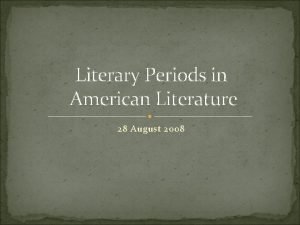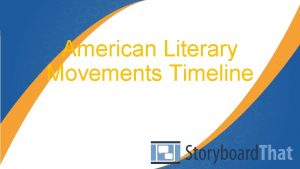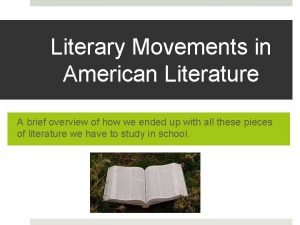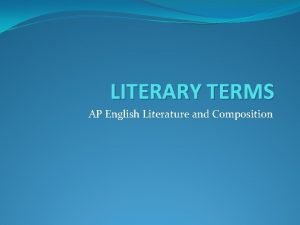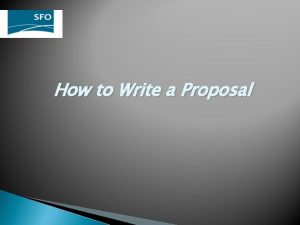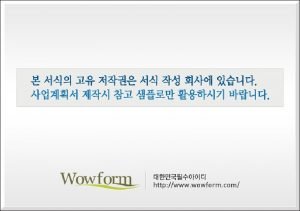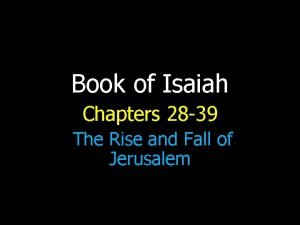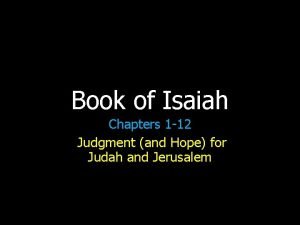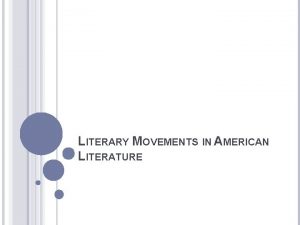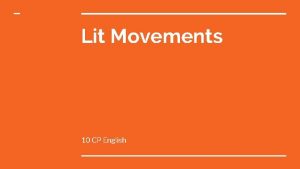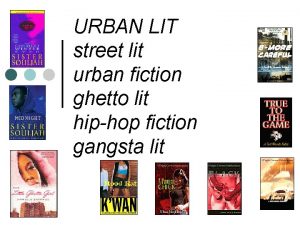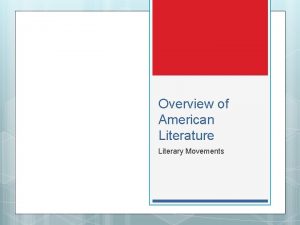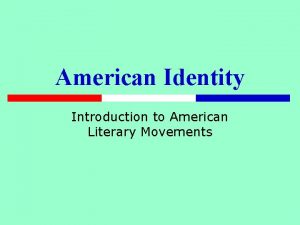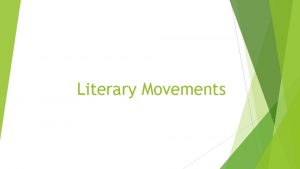American Lit II Major Literary Movements Review Highlights










- Slides: 10

American Lit II Major Literary Movements Review (Highlights Edition)

American Realism 1870 s - Now Background n Civil War, urban expansion, rise of middle-class Tenets n Moving towards narrative objectivity – which lead to a. . . n Questioning of established morality – and thus on the economic system, capitalism, that it was based on. n Attempt to show “real life” – though this often meant genteel, middle -class life. n This attempt to show real life meant that sexuality was treated more directly. Key American authors n Rebecca Harding Davis; Henry James (the Master of American realism); Mark Twain; Kate Chopin; Edith Wharton; William Dean Howells

American Naturalism 1860 s 1900/now? Background n Darwinism, populism/Marxism, urban decay, existential philosophy, corruption in political and business institutions Tenets n Darwin looms large n n n Existential n n n Humans are alone in a cruel/indifferent world God is dead or doesn’t care Capitalism n n Humans are animal As animals, we are controlled by our environment Like other gods, is dead. Conspicuous consumption? A sign of spiritual and intellectual death. And to worship mammon is to sink to a lower level of existence and can lead to poor treatment of workers. Subject matter is often of the lower classes Key American Authors n Rebecca Harding Davis (? ); Stephen Crane; Frank Norris; Kate Chopin (? ); Theodore Dreiser; Jack London

American Literary Modernism 1900 (or so) - 1945 (or so) Background n World War I n n Jazz Age n n Riots at the 1913 Paris premier of Stravinsky’s Rite of Spring showed that not everyone embraced “the new. ” Interest and confusion at the 1913 Armory Show in New York, which featured works by Picasso, Duchamp and Matisse, gave Americans a first hand look at a “new” visual aesthetic Rise of cities n n Both the music and particularly the lifestyle, was a movement away from the staid waltzes and emphasis on propriety of the 19 th century. Daisy Miller was born a generation too late. This emphasis on jazz led to the Harlem Renaissance, a flowering of black culture centered in New York City. Click for an interesting page on Jazz age lifestyle The Arts n n Though we entered the war late, the specter of supposedly civilized nations engaged in mass slaughter of humans illustrated the bankruptcy of the established order. Part of the impact of the Armory show was its large audience, which could only occur because of the city’s population density. By this time, the agrarian lifestyle was nostalgic, which explains, in part, the appeal of Robert Frost. The Great Depression n Nothing like empty pockets to get people questioning the status quo.

American Literary Modernism 1900 (or so) - 1945 (or so) Tenets part 1 – (can be contradictory) n Existentialism n n Science n n n Nietzsche: God is Dead But that’s okay – it’s just up to us to create meaning. . . or not. Alienation Einstein’s theory of relativity was covered on the front page of the New York Times. The idea that even time wasn’t static was a 20 th century version of Darwinism (a new understanding that undercut established views of the world). While acknowledging the influence of the environment, Freud’s idea of the unconsciousness controlling our actions and Carl Jung’s idea of an innate collective unconsciousness controlling the actions of an entire culture assumed a greater role in the, uh, consciousness of artists. Primitivism n One response to the chaos that is the modern world was to retreat to older forms, to revert to tribal and agrarian impulses. Thus, some modernist employed elements of folk tales and strived for a more colloquial, accessible voice and form.

American Literary Modernism 1900 (or so) - 1945 (or so) Tenets part 2 – (and still contradictory) n Classicist n n n Fragmentary view of the world – “The lost generation” Gertrude Stein n Literary works should be allusive and refer to classic literature (which they saw as a touchstone of enduring value). Art, like science or other fields, was a discipline and could – and needed to be – difficult. Readers have to work at finding meaning. No grand narrative (god, social order, culture, etc. ) holding the world/humans together. Speed is all: all is flux, all is chaos. Corruption of Capitalism n n The Great Depression led to a questioning of the role of money in society, a closer look at the dark underside of the American Dream. What exactly did “getting ahead” mean? Was it only in accumulating things? A continuing attack on “conspicuous consumption” (cf. Veblen)

American Literary Modernism 1900 (or so) - 1945 (or so) Key American Writers n Three tracks here First Track: Traditionalists n These writers shared many of the values of other modernists – antibourgeois, humanist, existential, etc. – but worked in formal modes. Their shock of the new comes from content and theme rather than form. Key American Authors n E. A. Robinson, Robert Frost, Countee Cullen, Zora Neale Hurston, F. Scott Fitzgerald, Edna St. Vincent Milay

American Literary Modernism 1900 (or so) - 1945 (or so) Second track: Make it new. . . but make it accessible n Like the first track, these writers shared many of the values of other modernists, but their interest was in form. They believed that it was time to stick a fork in sonnets, metered verse, and literary conceits like “the objective narrator” and “plot” because they were done: literature had exhausted these modes. Thus they experimented with presentation, in poetry resorting to free verse and in prose playing with the idea of narrator and toying with – or dispensing altogether – plot. Key American Authors n William Carols Williams, H. D. , e. e. cummings, Ernest Hemingway, William Faulkner, Ralph Waldo Ellison, Langston Hughes, Gertrude Stein

American Literary Modernism 1900 (or so) - 1945 (or so) Third track: High Modernism n These tracks are cumulative: the works here shared all of the qualities of the two preceding tracks, but add a dense, allusive texture, resulting in works of richness, depth, and complexity. Instead of striving for the accessible, these works revel in the arcane and the difficult. While challenging, many critics believe them to be the epitome of the aesthetic form. n. The range of modernism is illustrated by William Carlos Williams’ comments on Eliot’s The Waste Land, considered the holy grail of high modernism. A staunch rider on the second, accessible track of modernism, Williams wrote that the publication of The Waste Land in Dial magazine wiped out our world as if an atom bomb had been dropped upon it and our brave sallies into the unknown were turned to dust. To me especially it struck like a sardonic bullet. I felt at once that it had set me back twenty years, and I'm sure it did. Critically Eliot returned us to the classroom just at the moment when I felt that we were on the point of an escape to matters much closer to the essence of a new art form itself -- rooted in the locality which should give it fruit. I knew at once that in certain ways I was most defeated. Eliot had turned his back on the possibility of reviving my world. And being an accomplished craftsman, better skilled in some ways than I could ever hope to be, I had to watch him carry my world off with him, the fool, to the enemy" (174). Key American Authors n Ezra Pound, T. S. Eliot, Ralph Waldo Ellison, Gertrude Stein

American Literary Modernism 1900 (or so) - 1945 (or so) Off the track: Writers – period. n In any given time period, there are writers that do not fall under any particular category, who don’t write manifestos, or pledge allegiance to any reigning (or deposed) aesthetic. These popular writers were the meat and potatoes of 20 th century American literature.
